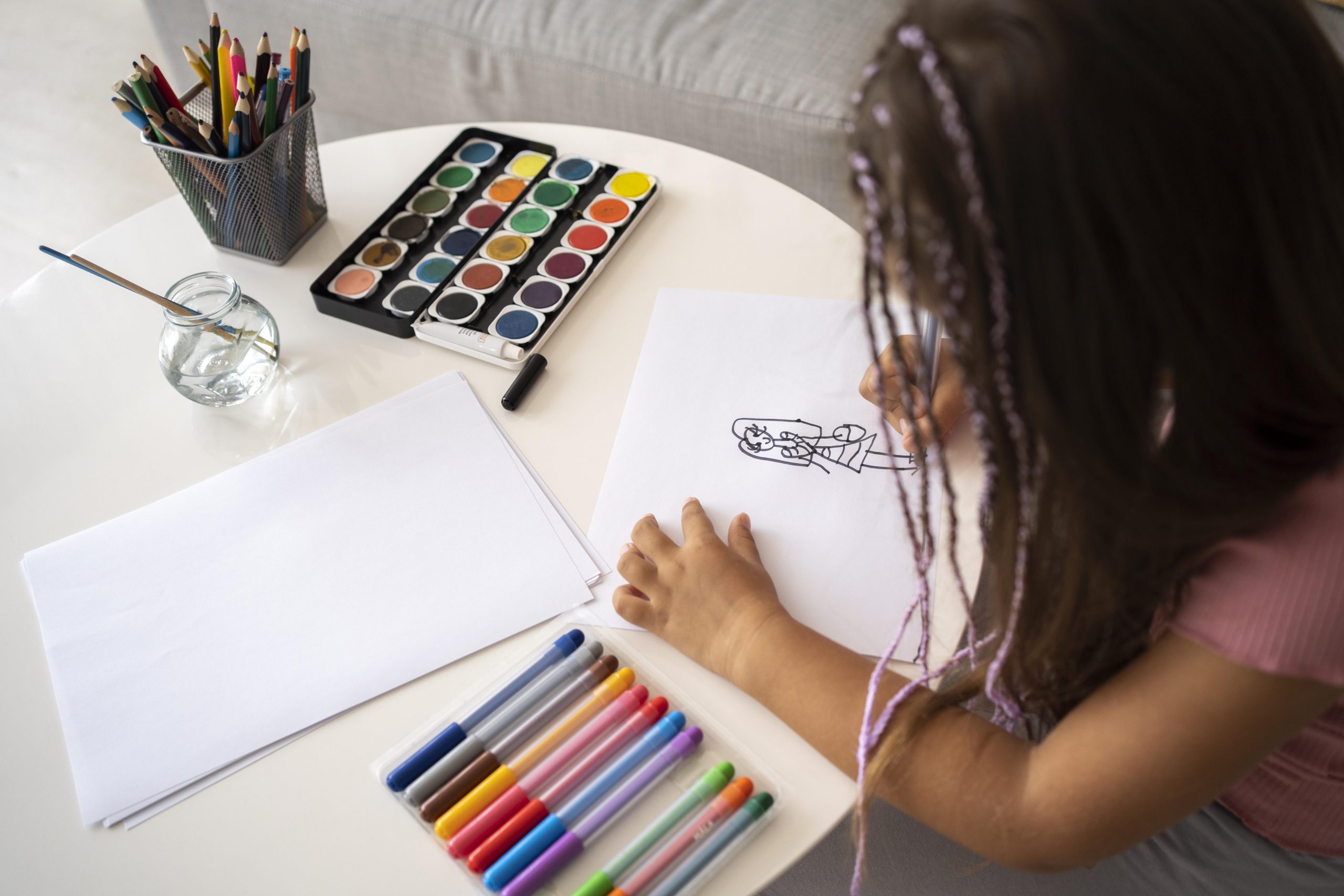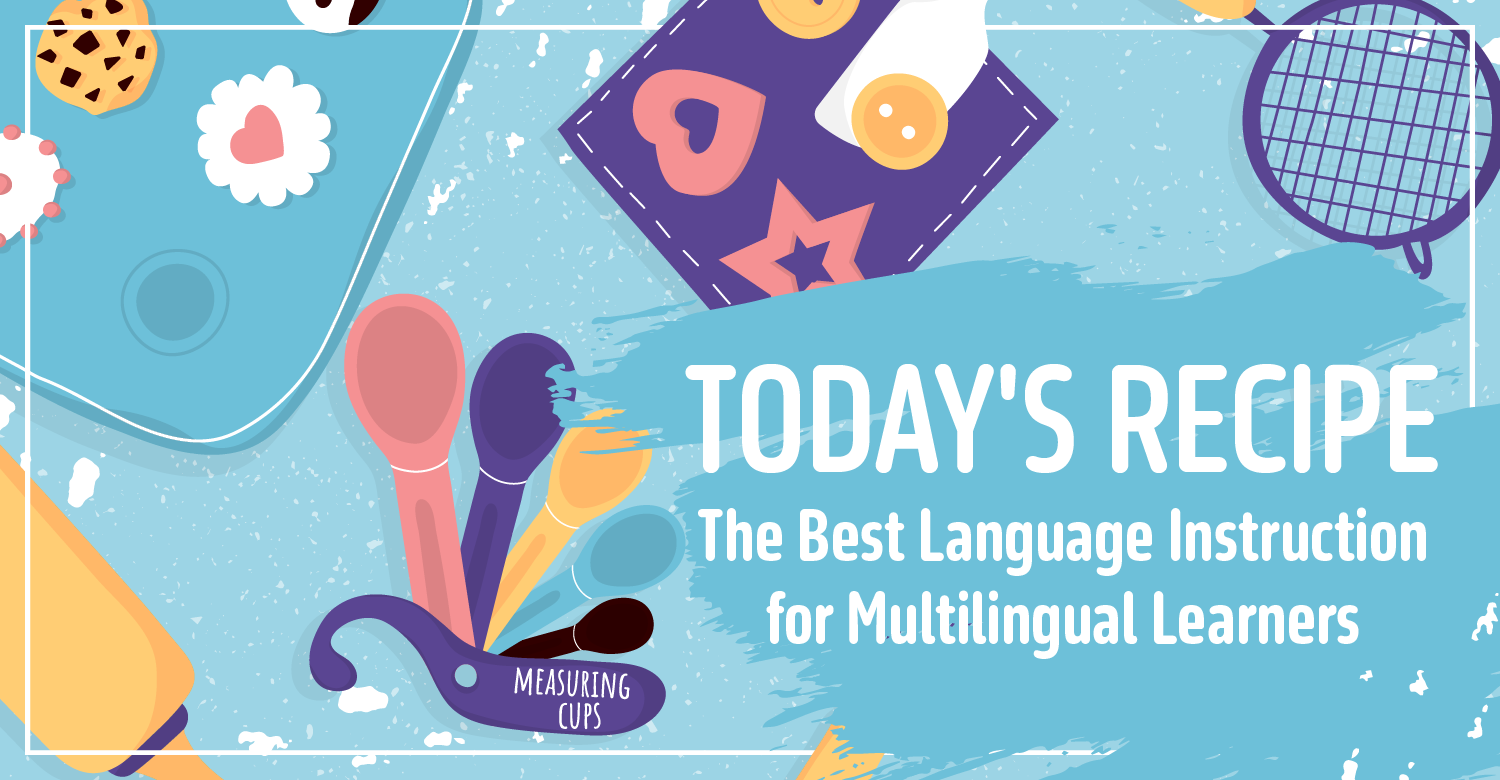Our students encounter thousands of words each day. Some of the words they are familiar with and read with ease. Other words are unfamiliar and may require decoding or other strategies to determine the word. Students may grapple with word meaning within the context of a sentence, paragraph, or story, but we can unlock student understanding when we use strategies to build their vocabulary knowledge in our classrooms.
Developing vocabulary happens when we expose students to language and support use of that language over time. This can happen both at home and in school. From an early age, we begin to develop awareness of language with our children. At home, we play with sounds and words. We encourage our children to name objects, listen to stories, and engage in conversations. When our children go to school, they are exposed to more language including robust vocabulary with their peers, their teachers, and in the books they explore.
3 easy strategies to help your students practice and improve
We can assist our students in their efforts to tackle new words every day. There are different strategies we can teach them and approaches that will help them as they build vocabulary knowledge.
For example, a group of third graders are reading a book with their teacher when they come upon the word reluctantly. One student breaks apart the multisyllabic word and is able to decode it. Another student says that the word sounds familiar, but is unsure what it means. One student tries to apply some background knowledge to help the group figure out what the word means. Students need regular opportunities to learn new words in a variety of ways.
Here are three ways that we can support vocabulary development in K–8 classrooms.
- Engage in conversations
- Facilitate meaning construction
- Incorporate hands-on strategies
1. Engage in intentional conversations in the classroom
In classrooms where students are at the center of learning, the learners are generating ideas, elaborating on concepts, and producing dialogue about what they are learning. When student talk drives classroom conversations, that is when learning happens! We can structure intentional conversations to deepen vocabulary knowledge.
Activity: A picture is worth a thousand words
Interesting images can be a way to engage students in the development of vocabulary. Posting an image of the day and designing questions can spark student conversation. As they talk, students are developing language skills and sharing stories, which may introduce new words as well as build background knowledge.
In a second-grade classroom, a picture was posted of a young boy on a bicycle headed down a tree-lined street. An adult is jogging beside him with his hands on the back of the bike and a smile on his face. As students come into the classroom, they examine the picture. On each group of desks, the teacher has provided several different sticky notes with a prompt:
- Describe the picture using as many words as you can.
- What are the characters thinking? Draw a thought bubble. Then write down one person’s thoughts.
- How do you think the boy in the picture prepared for this day? What happened up to this point?
- Imagine that the characters are talking to each other. What would they say? Write some dialogue between the two.
Activity: Which word doesn’t belong?
Another way to support vocabulary development through dialogue is playing games. The game Which One Doesn’t Belong offers students four pictures. The students study the pictures, figuring out the purpose or function. They also think about the potential connections between items and what category they might collectively belong in before determining which one does not belong.
This activity can be a conversation where students identify each image and talk about what they know. They can hypothesize and discuss their rationale. Offering differing opinions and learning how to politely disagree are important skills to build in the classroom.
2. Facilitate meaning construction and help students make connections
A common response to the question, “What does this word mean?” is for the learner to “go look it up.” Years ago, that meant trudging to the bookshelf and getting a dictionary. In today’s classrooms, it might mean Googling it or using another digital tool to find the meaning. After looking it up, learners might be encouraged to copy the definition. When I was in elementary school, it meant writing the definition over and over until I had it memorized. This might help students to memorize information for a short period of time, but it does not help them to construct meaning.
In order to construct meaning, we must see the word, create connections to the word, and apply the word in our communications with others. The meaning making needs to be on the part of the student, interacting with the word and developing their understanding, not solely through teacher-directed instruction.
Each time students encounter a new word, we have an opportunity. We can tell them what it means—or we can foster the development of student meaning making. When readers come upon a new word, let’s create an opportunity for them to co-construct knowledge with their peers, building vocabulary but also speaking and listening skills.
Activity: Table talk
During an independent reading session, students are asked to place two or three sticky notes in the text where they find an unknown word. Students then bring their notes to their small group to discuss the words like dilemma, accomplice, and gullible. Some students have knowledge of the words so they share examples of a dilemma they had on their baseball team or how gullible their little sister is. Their table talk allows the students to crowdsource information and build knowledge that will help the entire group.
One way to determine whether students understand new words is to have them provide examples. If the vocabulary word is livid, students should give examples of things that make them livid or describe a time when their parents were livid with them. Just reciting or writing the definition doesn’t show comprehension.
Understanding non-examples is another way to confirm mastery: Would your mom be livid if you brought home a snake for a pet–yes or no? Would you be livid if your parents brought home pizza for dinner? Would the principal be livid if a pig was loose in the school? Would a teacher be livid if her students got straight As in class? This type of dialogue can solidify understanding for students while continuing to foster speaking and listening skills.
3. Incorporate hands-on strategies in the classroom
In my book, Remaking Literacy: Innovative Instructional Strategies for Maker Learning, I share authentic ways that we can incorporate hands-on learning within our English language arts classrooms. Using anything from blocks to clay or markers and cardboard and including hands-on tools and materials in our instruction provides a concrete way for students to interact with new knowledge.
Activity: Visual vocabulary
Good readers create mental images as they read, which helps them to envision characters, settings, and actions in a story. We can attach a visual image to our vocabulary, strengthening the connection between the word and our own personal experience. Drawing has a powerful influence on memory, so when students have the opportunity to draw a vocabulary example or include drawing in their meaning making, the more likely they will be to remember the word.
When students learn the word treacherous, they might imagine a steep mountain trail on a hiking trip or choppy ocean waters. Depending on their background knowledge or personal experience, they can create digital images or drawings that support meaning making while also incorporating something creative and hands-on.

Activity: Sketch it, build it
While not all words are a perfect fit for this strategy, offering students the opportunity to sketch word meanings or build something to represent words can have a lasting impact on learners. Using building bricks, clay, or straws and connectors, students can construct objects while also constructing the meanings of words. Building a structure that is sturdy or drawing a scene that is chaotic will build meaning for students while they add their own personal and creative touch.
Even more fun and easy vocabulary strategies
The strategies shared in this post can be used to support all learners and can especially advance the language development of English learners. Activating a multimodal approach to vocabulary is one way to reinforce this important reading skill, but there are other strategies that you might want to try.
Vocabulary is an essential component of reading for learners of all ages. As our students grow, they will be exposed to more and more robust words to add to their lexicon. By engaging in conversations, facilitating the construction of meaning, and incorporating hands-on strategies, we can build vocabulary knowledge and unlock understanding for our students.
Jacie Maslyk, EdD, has more than two decades of experience in education. She has previously served as a teacher, reading specialist, elementary principal, and assistant superintendent.






